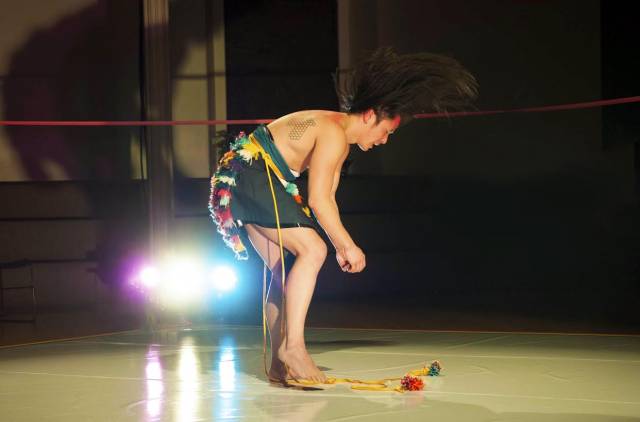

Enrico D. Wey opened this year’s spring season at Danspace Project on March 31 with a new solo work to accompany his 2015 work: this useless tool, this folded flower. Conceived as an intensely personal introspection, as well as a more macro examination of the role of the Asian male in society, Wey’s to warring states, a useless tool presented a strong, intellectually and historically based opening to this year’s Danspace season.
He begins in silence; standing center stage and moving, it seems, not at all. The audience is tensed, waiting for something to happen. Meanwhile, something is. Wey’s whole body is moving, but at a pace so slow that it takes minutes to realize that he is not the shape he was at the start. A faint, ambient naturescape soundtrack has been in the background the whole time, but we still feel a silence pressing down on us. To make use of silence is not uncommon, but Wey’s use of silence, and the perceived silence created by his non-movement, added a layer to the piece that forced the spectating audience to be party to the tableau at hand.
Wey is faceless—his long, dark hair draped over his identity for nearly the entire piece, simultaneously putting himself in front of the audience and hiding from it. He wears a garment that could be a skirt and could be traditional tribal garb, brightly multicolored and offset by the stark blankness of the space he occupies.
Until nearly halfway through the piece, Wey continues to move in a slow motion smattering of pink and yellow. When he does start to move in a larger way, he adopts undulating and repetitive movements that straddle the line between wild and controlled. The movement takes on several shapes as the piece continues. Its base stays the same, but the tone somehow changes, shifting from celebratory to animalistic to hopeful to devotional as it builds in intensity towards the piece’s denouement.
Wey’s quality of movement is eminently magnetic, alternating in placid and choppy textures. At times it is almost difficult to watch, but always captivating.